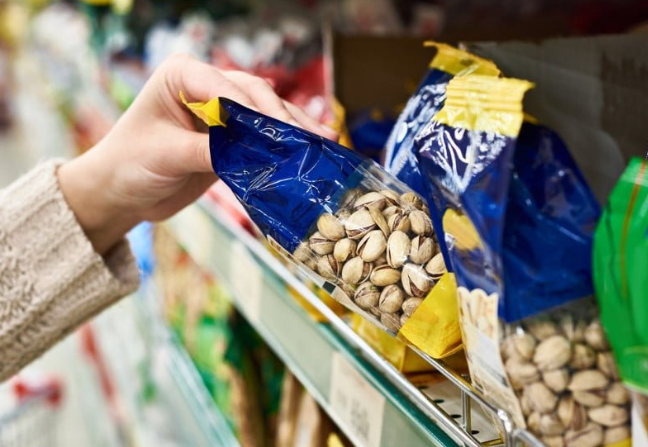The Advantages of Automated Food Packaging and the Future of Packaging Machinery
The Advantages of Automated Food Packaging and the Future of Packaging Machinery

In recent years, the astounding sales of leisure food during e-commerce festivals such as Double 11 have been observed. This remarkable growth can be attributed to the shifting dietary consumption patterns and the emergence of personalized demands. As the demand for leisure food continues to surge, significant attention has been directed towards addressing the pertinent issue of food packaging. Consequently, the automation of leisure food packaging has become an undeniable and imperative trend in order to effectively meet efficiency requirements.
Let us delve into the discernible benefits of automated food packaging:
Enhanced Production Volumes in Reduced Timeframes:
When the necessity arises to accelerate the production process or scale up product volumes, automated packaging systems present a superior solution compared to the conventional approach of recruiting additional personnel. In contrast to traditional food processing methods, automated systems and robots offer distinct advantages. For instance, food packaging robots can consistently execute specific tasks with exceptional precision, exhibiting minimal or no variation. Unlike their human counterparts, these machines do not succumb to fatigue, thereby enabling the sustenance of a continuous pace of work. This optimal balance between precision and speed has unequivocally proven to augment the performance of food production companies while concurrently upholding the industry's packaging standards.
Augmented Food Safety Measures:
The mounting concerns surrounding food safety have compelled companies to take assertive actions. Pertinent research data illustrates that nearly one in ten individuals worldwide fall ill after consuming contaminated food, resulting in a staggering annual toll of approximately 420,000 fatalities. Despite progressive advancements in food safety standards, instances of contamination-induced diseases persist, even within developed nations. By incorporating automated packaging machines within their facilities, food-producing companies can address this critical challenge. How does automation contribute to the resolution? Human workers, particularly those involved in handling raw products, inadvertently become potential vectors of bacteria transmission from one product or area to another. By curtailing human contact during the packaging process, companies can effectively mitigate the risk of food contamination. Automated food packaging machines, immobile by nature, inherently minimize the potential transmission of bacteria from external sources. Furthermore, strict adherence to requisite hygiene protocols significantly diminishes the minor probabilities of cross-contamination.
Heightened Precision in Operations:
Inevitably, human fallibility gives rise to errors, and in numerous instances, such errors prove to be exceedingly costly for companies. Within the realm of food production and packaging, quality assurance assumes paramount significance. The reduction of potential errors and defects represents the most efficacious approach towards enhancing profitability and operational efficiency. The implementation of an automated packaging system emerges as the optimal solution. These machines facilitate precise weight calculations, thereby minimizing product wastage. Additionally, they ensure accurate labeling, effectively preventing common errors typically attributable to human labor.
Substantial Cost Reductions - Diminished Labor Expenses:
By introducing automated food packaging systems within their facilities, companies can significantly curtail labor-related expenditures. The recruitment of responsible workers willing to operate within food factories, which operate at high production and packaging volumes, poses a considerable challenge. By automating these processes through the deployment of packaging machines, companies do not eliminate employment opportunities; rather, they streamline operations. Introducing a team of workers to operate these machines and instructing them on their usage proves to be substantially more efficient than repeatedly training employees on manual techniques whenever personnel changes occur.
The Future of Food Packaging Machinery:
In addition to satisfying the growing market demand and fostering improvements in quality, technological innovation stands as the catalyst driving the vigorous development of packaging machinery. In tandem with the rapid expansion of the domestic leisure food and beverage market, the levels of industrialization, standardization, and mechanization have witnessed substantial enhancements. Consequently, it is apparent that the progress of the food packaging machinery and equipment industry is intricately intertwined with these advancements.
Looking ahead, the market will increasingly favor intelligent, energy-efficient, and recyclable food packaging machinery that effectively curbs energy consumption. This trend aligns with the imperatives of energy conservation, environmental protection, and the advent of intelligent and digital transformation within the industry. Packaging machinery manufacturing enterprises are proactively expediting their transition towards intelligent transformation. A strategic focus on intelligent design, control systems, and equipment breakthroughs within research and application domains is paramount. Concurrently, the development of large distributed servo technology systems holds the potential to substantially reduce energy consumption while significantly enhancing the intelligence-driven packaging capabilities.
By embracing these advancements, the industry can remain at the vanguard of progress, consistently catering to the evolving market needs.




